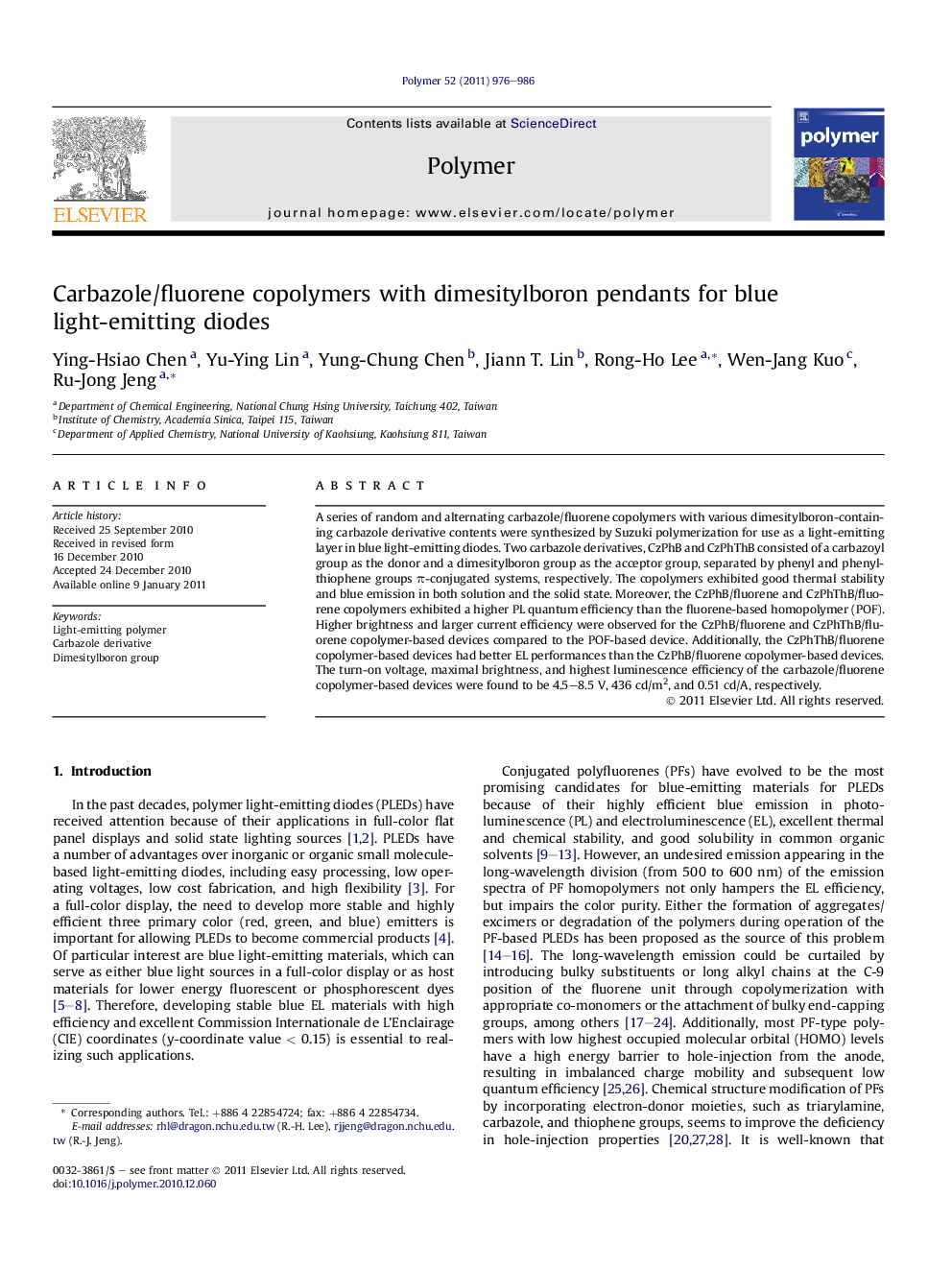| Article ID | Journal | Published Year | Pages | File Type |
|---|---|---|---|---|
| 5183493 | Polymer | 2011 | 11 Pages |
A series of random and alternating carbazole/fluorene copolymers with various dimesitylboron-containing carbazole derivative contents were synthesized by Suzuki polymerization for use as a light-emitting layer in blue light-emitting diodes. Two carbazole derivatives, CzPhB and CzPhThB consisted of a carbazoyl group as the donor and a dimesitylboron group as the acceptor group, separated by phenyl and phenyl-thiophene groups Ï-conjugated systems, respectively. The copolymers exhibited good thermal stability and blue emission in both solution and the solid state. Moreover, the CzPhB/fluorene and CzPhThB/fluorene copolymers exhibited a higher PL quantum efficiency than the fluorene-based homopolymer (POF). Higher brightness and larger current efficiency were observed for the CzPhB/fluorene and CzPhThB/fluorene copolymer-based devices compared to the POF-based device. Additionally, the CzPhThB/fluorene copolymer-based devices had better EL performances than the CzPhB/fluorene copolymer-based devices. The turn-on voltage, maximal brightness, and highest luminescence efficiency of the carbazole/fluorene copolymer-based devices were found to be 4.5-8.5Â V, 436Â cd/m2, and 0.51Â cd/A, respectively.
Graphical abstractDownload full-size image
